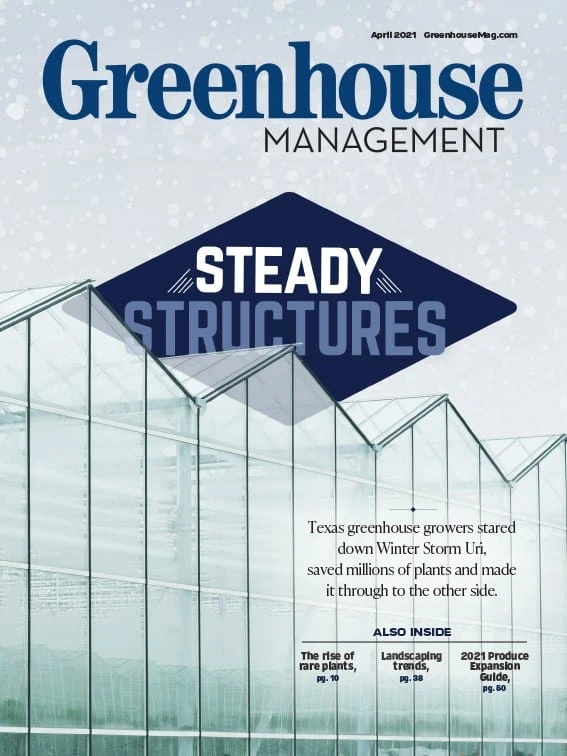

Since the 1970s energy crisis, screens have become an important part of environment control in greenhouses. More than a hundred types of fabrics have been developed for different purposes and all of them provide some energy conservation. They can be fully transparent to completely opaque, have open or closed weave, have reflective surfaces to reduce radiation or provide blackout conditions. Depending on the desired environment, selecting the right one can be difficult.
Comparing materials for energy conservation and other properties has also been difficult, as there have not been any standard tests available. In the past, most of the reported energy savings are from evaluating fuel savings in a particular greenhouse.
Recently, a standard in the Netherlands has been developed to provide uniform testing (NEN 2675 – 2018). Some of the properties that they examine include the following:
Energy savings – 30%-35% of total greenhouse heat energy is infrared thermal radiation. Energy screens reflect part of this heat (emissivity) from the surface. Screens also transmit radiation (transmissivity) through the fabric. The best screens are those that have a low emissivity and a low transmissivity. Screens with aluminized surfaces or aluminum strips meet this criteria and have the lowest radiation loses. Generally, if you install a single screen for energy conservation, select one with a closed weave and aluminum strips (Svensson – Tempa). This will provide shading during the day and energy conservation at night. Cracking the screen sections a few inches wide during the day will allow excess moisture to escape through roof vents.
Plant cooling: In hot climates, shading is important both for plant and air temperature control. In this situation, an open weave material works best (Svensson – Solaro, Polysack Plastic Industries – Aluminet). It allows the heat to rise and escape out through roof vents. It also allows the heat in the moisture to escape. The aluminum or white platic strips reflect the heat before it reaches the plant area. Depending on the amount of strips, it can provide moderate energy savings. An outdoor version of this material can be installed above the greenhouse to keep the heat from reaching inside.

Winter light transmission: To reduce heat loss during the daytime during the winter, a use of a material having a closed weave and high light transmission could be used (Svensson – Luxous). Materials with light transmission as high as 89% are available. Multiple screens of this material are sometimes installed to control the light level depending on the cloud cover.
Light Diffusion: Diffused light penetrates deeper and more uniformly into the lower plant leaf surfaces. It can increase growth and yield on most plants, especially tall ones, and is most effective on taller climbing crops, such as tomatoes, cucumbers and roses. Diffuse light can also reduce scorching, lower container temperature, reduce fungal spores and decrease insect propagation. Scattered light can also change the balance between red and far-red light. Alternating white and clear strips provides both energy conservation and uniform light across the growing area (Svensson – Harmony).
Blackout: To provide photoperiodic control for sensitive plants, a blackout material is needed ( Svensson – Obscura). It is available laminated with white surfaces on both sides to reflect summer heat away from the greenhouse and reflect supplemental light back to the crop area. With an inside aluminum surface, it will provide 70% energy savings.
Other considerations:
- Multiple screens are becoming popular to get maximum energy conservation. Cost is on average between $2 - $5/sq ft installed.
- Most screen materials are available in many shade levels and energy conservation percentages.
- A material that is flame retardant will meet most building codes.
- To reduce the shading when retracted, select a material that folds compactly.
- To be effective all screens should have a tight seal where they butt against the greenhouse wall and trusses.
- Useful life of the material is 5 – 10 years. System life varies up to 20 years.
- Clean dust and dirt to retain high light transmission, replace when it is frayed or aluminum delaminates.

Explore the April 2021 Issue
Check out more from this issue and find your next story to read.
Latest from Greenhouse Management
- Anthura acquires Bromelia assets from Corn. Bak in Netherlands
- Top 10 stories for National Poinsettia Day
- Langendoen Mechanical hosts open house to showcase new greenhouse build
- Conor Foy joins EHR's national sales team
- Pantone announces its 2026 Color of the Year
- Syngenta granted federal registration for Trefinti nematicide/fungicide in ornamental market
- A legacy of influence
- HILA 2025 video highlights: John Gaydos of Proven Winners





